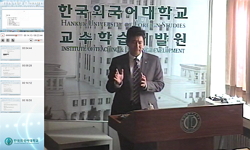목적 본 연구는 성폭력 피해경험을 분석함으로써 성폭력 피해경험자의 삶을 깊이 이해할 수 있으며, 외상 후 성장에 대한 경험을 심층적으로 알아보고자 하는 데 목적이 있다. 방법 이러한 ...
http://chineseinput.net/에서 pinyin(병음)방식으로 중국어를 변환할 수 있습니다.
변환된 중국어를 복사하여 사용하시면 됩니다.
- 中文 을 입력하시려면 zhongwen을 입력하시고 space를누르시면됩니다.
- 北京 을 입력하시려면 beijing을 입력하시고 space를 누르시면 됩니다.

성폭력 피해경험자의 외상 후 성장경험에 대한 자문화기술지 = An autoethnography of post-traumatic growth experience from a sexual assault survivor
한글로보기https://www.riss.kr/link?id=A108128062
- 저자
- 발행기관
- 학술지명
- 권호사항
-
발행연도
2022
-
작성언어
-
- 주제어
-
KDC
373
-
등재정보
KCI등재
-
자료형태
학술저널
-
수록면
463-486(24쪽)
- DOI식별코드
- 제공처
-
0
상세조회 -
0
다운로드
부가정보
국문 초록 (Abstract)
목적 본 연구는 성폭력 피해경험을 분석함으로써 성폭력 피해경험자의 삶을 깊이 이해할 수 있으며, 외상 후 성장에 대한 경험을 심층적으로 알아보고자 하는 데 목적이 있다. 방법 이러한 연구의 목적을 위해 일기자료, 자기성찰 과제자료, 성찰을 목적으로 쓰는 카페 게시글 자료, 회상자료, 면담 축어록 자료, 가족 인터뷰 자료를 사용하였다. 자료 분석을 위한 코딩은 삶의 여정을 탐구하는 종단적인 질적 연구방법에 적합한 종단적 코딩방식을 사용하여 연구자인 ‘나’의 어린 시절부터 현재까지 시간의 흐름에 따라 분석하였으며 감정코딩과 가치코딩으로 해석을 시도하였다. 자료 수집 및 분석 과정은 삼각검증법을 통해 신뢰도와 타당도를 확보하였다. 결과 본 연구의 결과는 다음과 같다. 첫째는 성폭력 피해경험으로 모든 것이 ‘수치스러운, 너무나 수치스러운’, 둘째는 불안과 무력함으로 ‘아픈지도 모르고 아팠던 어린 시절’, 마지막으로 선명해지는 존재를 느끼며 미래를 기대하는 ‘성장하고픈 나’로 주제를 도출하였다. 결론 이를 토대로 본 연구는 성폭력 피해경험자에 대한 깊은 이해를 돕는데 의의가 있으며, 이들의 성장을 조력하기 위해 개인적인 문제가 아닌 우리 사회가 속해 있는 가부장제 속에서 성폭력을 이해하고, 사회구조적인 문제로 인식하고 있는지를 자문해 볼 수 있다.
다국어 초록 (Multilingual Abstract)
Objectives This research aims to achieve a deep analysis of post-traumatic growth with sexual abuse experience. It also focuses to navigate the narrative with the sexual abuse experience and establish a guideline for understanding the life of a sexual...
Objectives This research aims to achieve a deep analysis of post-traumatic growth with sexual abuse experience. It also focuses to navigate the narrative with the sexual abuse experience and establish a guideline for understanding the life of a sexual assault survivor. Methods While using autoethnography as a qualitative research method, the paper analyzed diary records, self-examination data, online postings, retrospection data, verbatim records, and family interview data. It used the longitudinal coding method, which is suitable for researching the journey of life. The author analyzed materials as the flux of time from juvenile to present. She interpreted them using emotional coding and value coding. She also used triangulation to acquire reliability and validity in process of collecting and analyzing data. Results The research result is as follows. Firstly, the author felt everything was ‘ashamed, too ashamed’ due to the experience of sexual abuse. Secondly, she went through all ‘unnoticeable pain in childhood’ with anxiety and helplessness. Lastly, she built a ‘desiring self of growth’ with clear self-recognition and future expectations. Conclusions The study has the significance of giving deepen understanding of people who experienced sexual assault. It also highlighted that sexual assault is not an individual problem but a structural problem in our patriarchal society. The study tried to raise the issue of introspection for readers to support the growth of “sexual assault experiencer.”
목차 (Table of Contents)
- Ⅰ. 서론 Ⅱ. 연구 방법 Ⅲ. 연구결과 Ⅳ. 결론 및 제언 참고문헌
- Ⅰ. 서론 Ⅱ. 연구 방법 Ⅲ. 연구결과 Ⅳ. 결론 및 제언 참고문헌
동일학술지(권/호) 다른 논문
-
학업성취요인은 창의성 신장에 어떻게 기여하는가? : 신념, 목표, 동기 및 태도의 통합적 접근
- 학습자중심교과교육학회
- 안동근(Donggun An)
- 2022
- KCI등재
-
- 학습자중심교과교육학회
- 조한아(Cho, Han-A)
- 2022
- KCI등재
-
- 학습자중심교과교육학회
- 김진영(Kim Jin Young)
- 2022
- KCI등재
-
- 학습자중심교과교육학회
- 김성자(Sungja Kim)
- 2022
- KCI등재




 스콜라
스콜라


